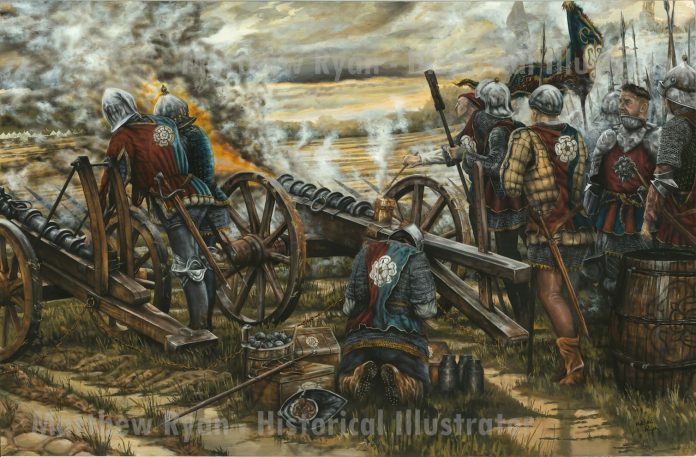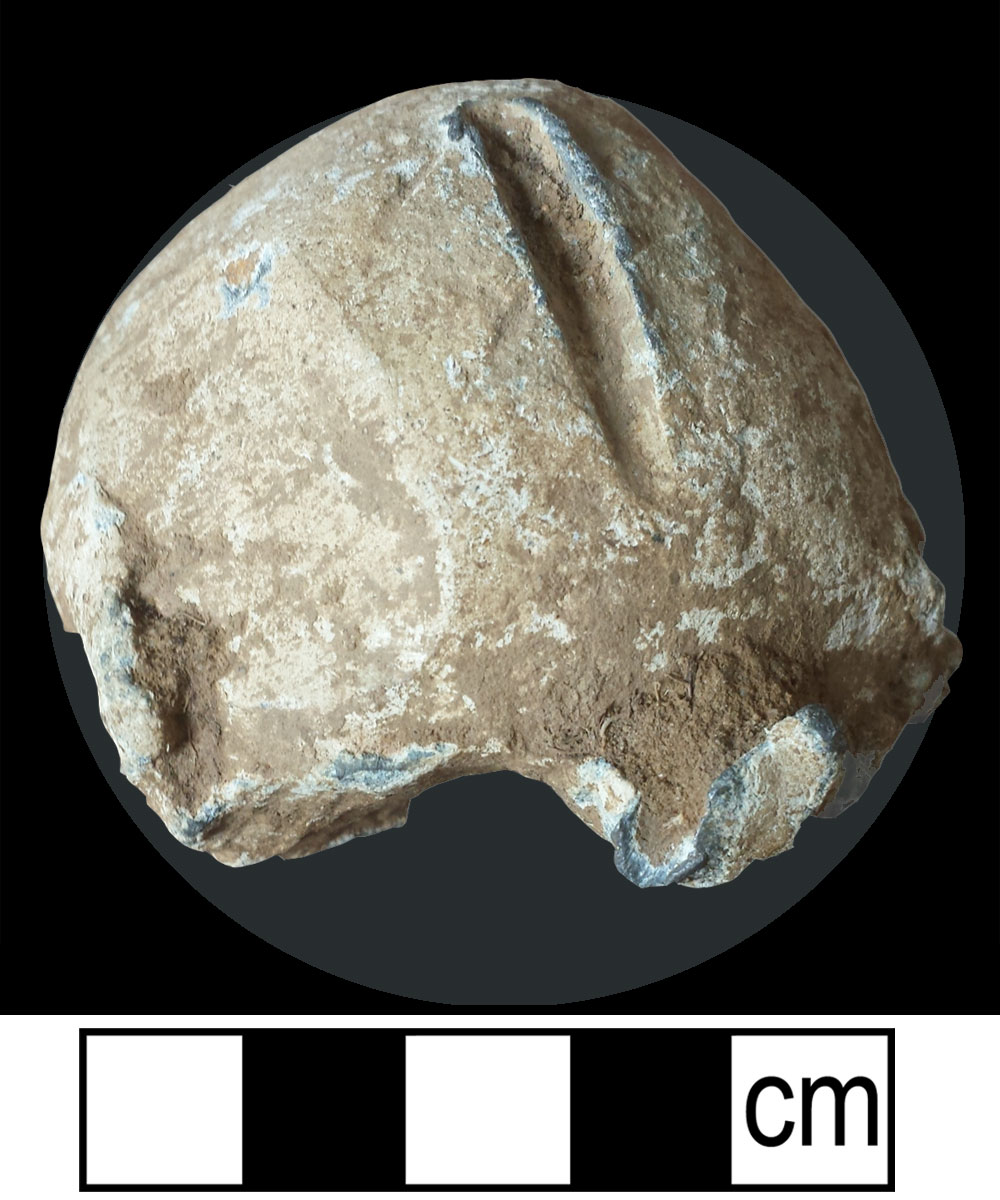The battle of Northampton was fought between Yorkist and Lancastrian forces on 10 July 1460 and was an important and a key engagement during the Wars of the Roses.
A key battle
At the end of June 1460, the Yorkist Earls of Salisbury and Warwick returned to England with their supporters following their previous defeat at the battle of Blore Heath in 1459. Gathering forces as they went, they approached London where, in early July, they were joined by other Yorkist nobles and troops. Leaving a small force under Salisbury to keep watch over the Tower of London, which remained in Lancastrain hands, the Yorkists set of to confront the King before he had time to muster his full strength.
King Henry VI moved to intercept at Northampton and camped in the fields south of the town, close to Delapre Abbey (Now under renovation as a Visitor Centre). On the morning of 10th July the York army arrived; attempts at negotiation led by the Archbishop of Canterbury failed, and battle became inevitable.
This was the only Battle of the Wars where a defended position was successfully attacked and breached (due to the treachery of Lord Grey allowing Yorkist soldiers into the Lancastrian camp). The battle had lasted only a short time, but many Lancastrian soldiers drowned in the rain-swollen river Nene.
The King was captured and taken prisoner, and the subsequent Act of Settlement (1460) recognised the claim of the House of York to the throne. The Duke of York was then able to return from exile in Ireland and press this claim.
There is also documentary evidence that artillery was used, and this is now confirmed by this remarkable survivor of the conflict. Indeed it was said that the kings artillary had failed to fire, perhaps due to the heavy rain, suggesting teh cannon ball may have been fired by York gunners.
The ball was actually found some 25 years ago by the late Stuart Allwork, but had been believed lost until last year when his son managed to find the lost artefact. Since its rediscovery the cannon ball has been subjected to detailed analysis by Dr Glenn Foard, one of the UK’s leading experts on medieval artillery and noted battlefield archaeologist from Huddersfield University.
The 50-60mm diameter ball was found in an area now known as Delapré Park but was originally farmland in the area of Eagle Drive, Northampton, and is part of the English Heritage registered battlefield site.
A relic from the battle
Dr Foard also led the team that found the true site of the Battle of Bosworth. A programme of research and scientific testing of the ball is ongoing, Dr Foard has concluded that “It is highly likely that the projectile was fired during the battle in 1460”.
The Eagle Drive Cannon Ball itself has suffered massive impact damage from at least two bounces, and one gouge still contains small fragments of Northampton Sand and Ironstone. A testimony to the immense forces in play as the shot ricocheted across the battlefield.
Other damage may have been caused by the cannon ball hitting a tree. But whatever caused the damage it is a vivid reminder of the dangers of a medieval battlefield which could at any moment maim or kill without favour the lowliest peasant conscript, one of the most powerful nobles in the Kingdom or even a King. In August the same year James II of Scotland was killed by an exploding cannon at the siege of Roxburgh Castle.
A unique battle
The Battle of Northampton itself is also unique in British military history.
It was the only time a fortification was assaulted, the last time protracted negotiations proceeded a battle, and the only time a whole army was excommunicated during the Wars of the Roses.
In its aftermath, Richard of York, the father of Richard III, laid claim to the throne for the first time, setting in train the series of violent and tragic events which eventually saw his son die on the field at Bosworth twenty five years later.
This important artefact – which was so nearly lost – supports current theories about the position and orientation of the battle which form the basis of Northampton Council’s Conservation Plan for the site which was adopted in 2014.

 Matthew Ryan - Historical Illustrator
Matthew Ryan - Historical Illustrator 